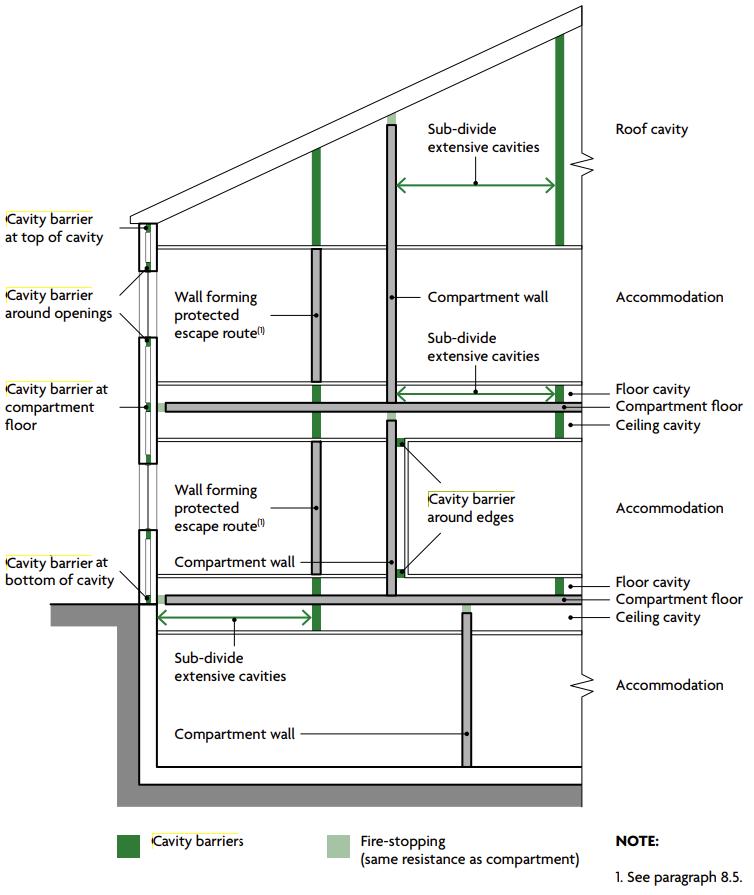Part B of the Building Regulations establishes the requirement for either a cavity barrier or a fire stop depending on the location in the building. These are typically in line with a compartment wall or floor, and the minimum performance requirements set out for each are different.
Where should I use a cavity barrier?
Diagram 8.1 in Part B Vol 1 2019 sets out where cavity barriers and fire stops should be installed.
Generally speaking, a fire stop is required where there is a break in or a penetration through the compartment wall or floor. A cavity barrier is used to subdivide larger concealed spaces, for example wall cavities and roof spaces. They are also used to protect around openings, for example windows and doors in external walls.

The performance requirements
A cavity barrier is required to provide a minimum of 30 mins fire integrity and 15 mins insulation (E30 & I15).
Fire stopping is required to match the fire performance of the compartment. This is typically a minimum of EI60 – 60 mins integrity and 60 mins insulation.